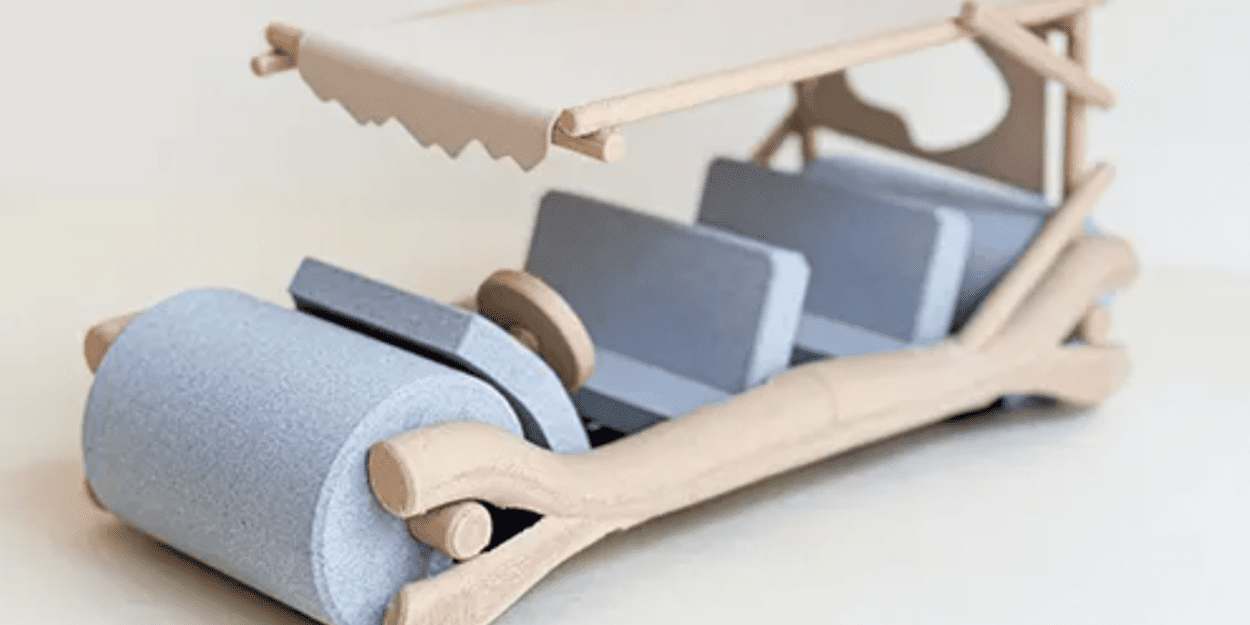Banner Image Courtesy of colorFabb
What is Wood 3D Printer Filament?
Wood filament is a composite 3D printing material made by combining a standard thermoplastic, most commonly PLA, with finely ground wood particles or fibers. The result is a filament that not only looks like wood but also feels and smells like it when printed.
The composite material typically contains 20–40% wood content by weight, offering a natural, grainy texture in the finished parts. Different types of wood powder, such as bamboo, cedar, birch, or cork, can be used to vary the aesthetic and even the scent of prints.
While the base polymer provides the necessary melting and extrusion properties for 3D printing, the embedded wood fibers deliver the organic look and tactile feel that can make printed objects resemble traditional carved pieces.
Key Properties
Wood filaments combine characteristics of both PLA and natural wood. Key performance and visual properties include:
1. Aesthetic: Prints have a matte, grain-like surface resembling real wood.
2. Lightweight Composition: Lower density than pure PLA, especially with higher wood content.
3. Low Warping: Inherits PLA’s stable printing characteristics, making it suitable for most open-frame printers.
4. Variable Color Tones: Can be manipulated by changing print temperature (slightly darker at higher temps).
5. Scented Printing: Emits a wood-like aroma during extrusion, enhancing user experience.
6. Surface Machinability: Can be sanded, stained, and painted like real wood.
Pros and Cons of Wood Filament
|
Pros |
Cons |
|
Realistic wood-like grain and matte finish |
Higher clog risk; avoid nozzles smaller than 0.5 mm |
|
PLA-like printability with low warping |
Lower strength and more brittle than pure PLA |
|
Sands, stains, paints, and engraves well |
Absorbs moisture; keep filament dry to prevent defects |
|
Lightweight with warm tactile feel and mild aroma |
Prone to charring at high temps, leading to dark spots and buildup |
|
Available in multiple “species” for varied tones |
Poor UV and heat resistance; best for indoor use |
Recommended Printer Settings
To achieve optimal results with wood filament, fine-tuning your printer setup is essential.
|
Setting |
Recommended Range |
Notes |
|
Nozzle Diameter |
≥ 0.5 mm |
Reduces clogging and allows smoother flow of wood fibers |
|
Printing Temperature |
190–220 °C |
Lower for lighter tone, higher for darker tone |
|
Bed Temperature |
50–70 °C |
Improves adhesion, but can be printed on unheated bed with glue stick |
|
Print Speed |
40–60 mm/s |
Slower speeds improve layer adhesion and surface finish |
|
Cooling Fan |
50–100% |
Helps prevent stringing and overheating |
|
Retraction |
Minimal (1–2 mm) |
Reduces risk of clogs in the nozzle |
Pro Tip: Periodically clean your nozzle after extended wood filament use. Brass nozzles can wear faster; consider hardened steel for longevity.
Top Applications
1. Decorative Items
Wood filament is perfect for picture frames, sculptures, coasters, and ornaments that benefit from a natural, rustic appearance.
2. Architectural Models
Adds a realistic texture and tone for scaled buildings, interiors, and furniture prototypes.
3. Custom Gifts
Personalized nameplates, engraved keepsakes, and intricate art pieces that can be stained for a handcrafted touch.
4. Props & Cosplay
Props gain authentic visual warmth without heavy weight, ideal for stage and costume accessories.
5. Furniture Accents
Handles, knobs, or small wooden elements that can complement real wood furnishings.
FAQs
Q: Can I use any 3D printer with wood filament?
A: Most FDM printers can handle wood filament if equipped with the right nozzle size (≥ 0.5 mm) and capable of PLA printing temperatures.
Q: Does wood filament really smell like wood?
A: Yes, during printing, it releases a mild wood aroma, which can vary depending on the wood type in the blend.
Q: How do I prevent nozzle clogs?
A: Use a larger nozzle, reduce retraction, and clean your hotend regularly when switching between materials.
Q: Can I stain or paint wood filament prints?
A: Absolutely. Like real wood, it accepts stains and paints well after light sanding.
Q: Is wood filament stronger than PLA?
A: No, it’s generally more brittle. It’s intended for aesthetic projects rather than structural applications.
Wood filament bridges the gap between technology and craftsmanship, letting makers create pieces that blend digital precision with organic beauty. While it’s not a universal replacement for traditional materials, its charm lies in applications where visual warmth and hand‑finished potential matter most.














